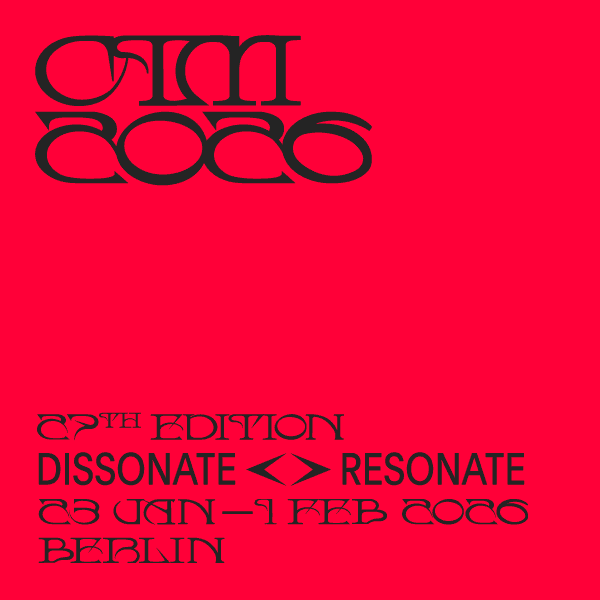A difficult beast to tame
Sometimes a debut concert is not really a debut concert. Bára Gísladóttir had released three albums, won a spree of awards and heard her works performed by the Iceland Symphony and Frankfurt Radio Orchestras before she checked-out of the Royal Danish Academy of Music last week, on Wednesday, with this performance. Her career appears to have moved far beyond the confines of that institution and she had no use for its concert hall on this occasion, instead luring hundreds of curious folk away from the city and up to Denmark’s prototype for Reykjavík’s Hallgrímskirkja, Grundtvig’s Church in the Bispebjerg district of Copenhagen.
The monolithic landscape-in-sound we heard inside was scored for all manner of instruments including Gísladóttir’s own double bass but the one she really had in her sights – the beast she seemed so set on taming – was the one we were all huddled inside: Peder Vilhelm Jensen-Klint’s slender yellow brick nave with its immense reverberating acoustic. Víddir (‘Dimensions’) was the work’s title and felt like one of those Icelandic words that stretches far beyond the confines of its already broad definition. Dimensions of all forms we experienced, at every turn, during a work whose primeval rumbles and tectonic judderings felt like snapshots of a far bigger process, one whose naturally recurring cycles neither begin nor end (or weren’t designed to end until humans got involved).
In that sense, Víddir felt not so much like a warning as a prophecy. There was little catharsis here
The headline instrumental group was a herd of nine flutes of all sizes, whistling, puffing and braying into the ether at the behest of squadron leader Björg Brjánsdóttir, positioned at the foot of the chancel with her colleagues spread spatially around the audience. They induced the work with an ominous breeze ragged at the top by crystal overtones. When they returned as living beings later on it wasn’t with the avian decoration of Björk Utopia but to neigh and caterwaul like four-legged animals, marking the work’s most obvious point of existential crisis.
A prophecy
Most interesting musically, structurally, thematically was the uncompromising runic chant of Gísladóttir’s own double bass, itself laid over the deep murmuring created by Skúli Sverrisson’s tapping on his processed bass guitar, which echoed through the church as if through a cave. Gísladóttir’s patient improvisation was born of intense listening and reactivity – to itself, to Sverrisson, to the room. Her instrument could sound like all manner of flutes too: deep windy bourdons and high whistles, whether rendered as splintered overtones or bowed right down at the bridge. But as the emotional heart of the piece, this passage came early and a second monologue couldn’t generate the same cumulative intensity or focus.
Perhaps that’s to read Víddir as a narrative saga rather than a meteorological and/or metaphysical experience. At its most overwhelming, it felt like a treeless Icelandic Tapiola, roaring through the tall nave like the east wind and with a colour spectrum so broad and deep that the best way to try to get inside it was to close your eyes and concentrate. Again and again, cumulative waves of mustering sound appeared to herald the imminent arrival of a climax point without delivering one. The piece felt all the more real for it: don’t listen around the corner, listen in the moment. Gísladóttir’s outlook is too foreboding and desolate to warrant the dangling of carrots or teeing-up of sitters for her fellow musicians to boot in. In that sense, Víddir felt not so much like a warning as a prophecy. There was little catharsis here.
Iceland Symphony Orchestra performing the world premiere of Bára Gísladóttir’s ‘Ós’ (2018).
And yet, sometimes it was hard not to sense that things weren’t riding the acoustic in quite the way Gísladóttir would have wanted – that beyond her own scrupulously built improvisations, there was some lack of inevitability in the transitions, some awkwardness in Neko3’s panicked rummage through the percussion box that characterized the penultimate chapter (the piece really didn’t need a rain stick – it was bigger than that) and some constraint with the whole setup of an audience seated in regimented rows, looking in a single direction towards the light when this was music that wanted to avoid overt focus on an obvious end-point (even if one eventually arrived).
The balance between free improvisatory space and the broader existence of a set overarching scheme and tempo was held skillfully in the air by Gísladóttir and Sverrisson but when the centre of gravity moved to her colleagues that balance appeared to fall away. Nor did the spatial positioning of the flutes always traverse the space with the natural resonance they wanted to. You could tell when the whole apparatus was breathing as one … and when it wasn’t. Maybe a more organic sense would have come with time and familiarity (and a second performance). Maybe the work needed to be shorter, more intensely reactive, played more with the ears and with a better macro-reflection of the many-splintered spectrums the composer is so adept at conjuring. One of the most fascinating and translucent came at the end when, like Sibelius’ Tapiola, Víddir came to rest on a tranche of fading crepuscular light.
Beyond the Icelandic stereotype
Little of that bothered the huge, appreciative and quiet audience that made the pilgrimage to hear the piece and was met with an uncompromising creative stare from a composer who sees particular forms of darkness in this world, has the raw talent and self-discipline to be able to present them clearly and can apparently realize them in so many different forms. On a broader stylistic level, you could hardly hear Víddir and not think it Icelandic – from its black rock foundation to its forbidding winds, wide horizons, generally dark outlook and abundance of dangerous undercurrents. Yet it was, at the same time, so clearly the work of an individual, partisan composer who senses her purpose and has little problem semaphoring it out even when the technicalities don’t quite hang together.
Sometimes it was hard not to sense that things weren’t riding the acoustic in quite the way Gísladóttir would have wanted
Did Gísladóttir ultimately master the instrument that is Grundtvig’s Church’s nave? Yes, but it might have depended on your vantage point. This was a heavily attended debut concert and those considerable numbers seated in the rear half of the nave were left in a no-mans-land, with photographers and musicians incessantly moving around in front of them (ditto for those on the outer ends of rows towards the outer aisles), breaking the illusion of a broader physical stillness on which the piece to some extent relied. Perhaps logistics prohibited it, but surely far better to have the performers in the middle of the nave, in the break in seating, with the audience facing them from both sides? Likewise it was hard not to mull over just how unsettlingly Denmark’s deepest-sounding organ pipe might have underpinned Gísladóttir’s rumbling wind-scape, just when you thought it couldn’t have been filled-out even more. As it is, the main organ remained silent.
But if a debut concert is not really a debut concert, then it’s a chance to blitz the imagination in the knowledge that you’ll probably never get a similar opportunity again. In that sense, Gísladóttir grasped the nettle. But in showing us the breadth of her imagination, she also demonstrated that it must itself – on this scale – be a difficult beast to tame.

